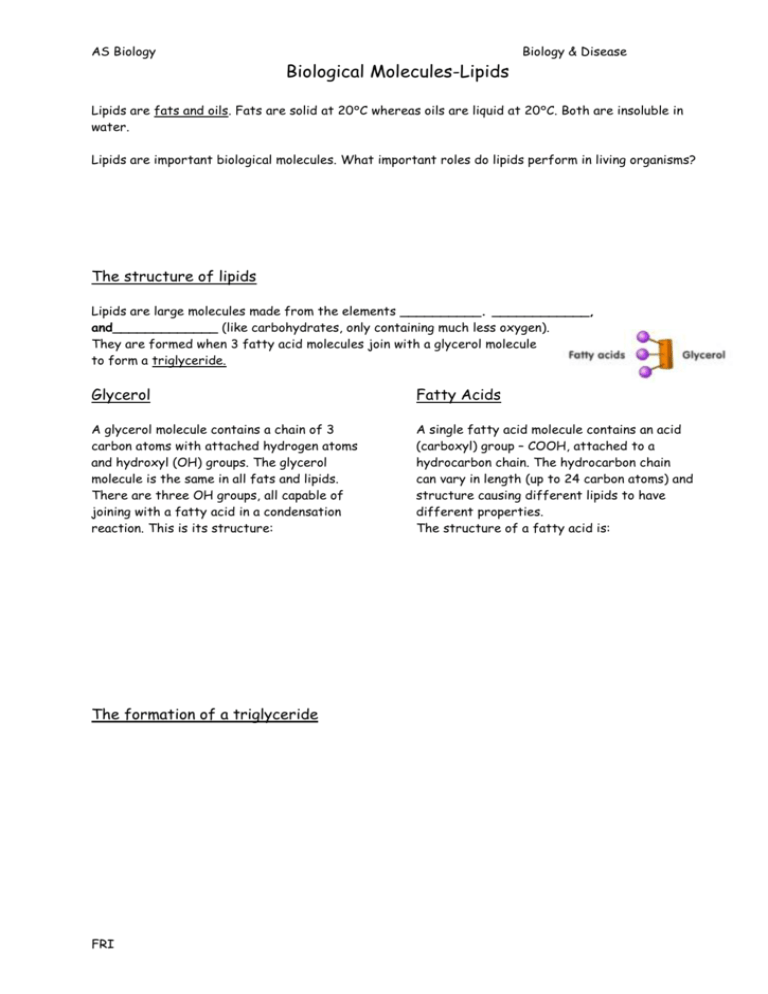Lipids Worksheet
advertisement

AS Biology Biological Molecules-Lipids Biology & Disease Lipids are fats and oils. Fats are solid at 20°C whereas oils are liquid at 20°C. Both are insoluble in water. Lipids are important biological molecules. What important roles do lipids perform in living organisms? The structure of lipids Lipids are large molecules made from the elements __________. ____________, and_____________ (like carbohydrates, only containing much less oxygen). They are formed when 3 fatty acid molecules join with a glycerol molecule to form a triglyceride. Glycerol Fatty Acids A glycerol molecule contains a chain of 3 carbon atoms with attached hydrogen atoms and hydroxyl (OH) groups. The glycerol molecule is the same in all fats and lipids. There are three OH groups, all capable of joining with a fatty acid in a condensation reaction. This is its structure: A single fatty acid molecule contains an acid (carboxyl) group – COOH, attached to a hydrocarbon chain. The hydrocarbon chain can vary in length (up to 24 carbon atoms) and structure causing different lipids to have different properties. The structure of a fatty acid is: The formation of a triglyceride FRI AS Biology Biology & Disease Triglycerides can be represented in different ways: Triglycerides are non-polar. This means there is no uneven distribution of charge within the molecule. This means they do not form hydrogen bonds with water molecules and therefore do not dissolve in water. The ‘R’ group or hydrocarbon tail The R group of a fatty acid can be saturated or unsaturated. What does this mean? Saturated- A saturated fatty acid is saturated with hydrogen- every bond in the hydrocarbon tail is a single bond- there are no double carbon bonds (C= C). This makes saturated fatty acids straight and they have a high melting point. Most animal fats are saturated. Unsaturated- An unsaturated fatty acid is one in which there is at least one double C=C bond somewhere in the hydrocarbon tail. The C=C bond causes the tail to bend. Unsaturated fatty acids have much lower melting points than saturated fatty acids. Most plant fats are unsaturated. A tail with many double C=C bonds is polyunsaturated. Questions 1. Describe a chemical test that could test for the presence of fat. What is the name of this test? 2. Describe the functions of fats in living organisms. 3. What type of bonds are formed when a glycerol molecule joins with three fatty acid molecules? FRI 4. What is the name given to the chemical reaction which breaks down triglycerides into fatty acids and glycerol? 5. What is the chemical difference between a saturated and an unsaturated fat?











